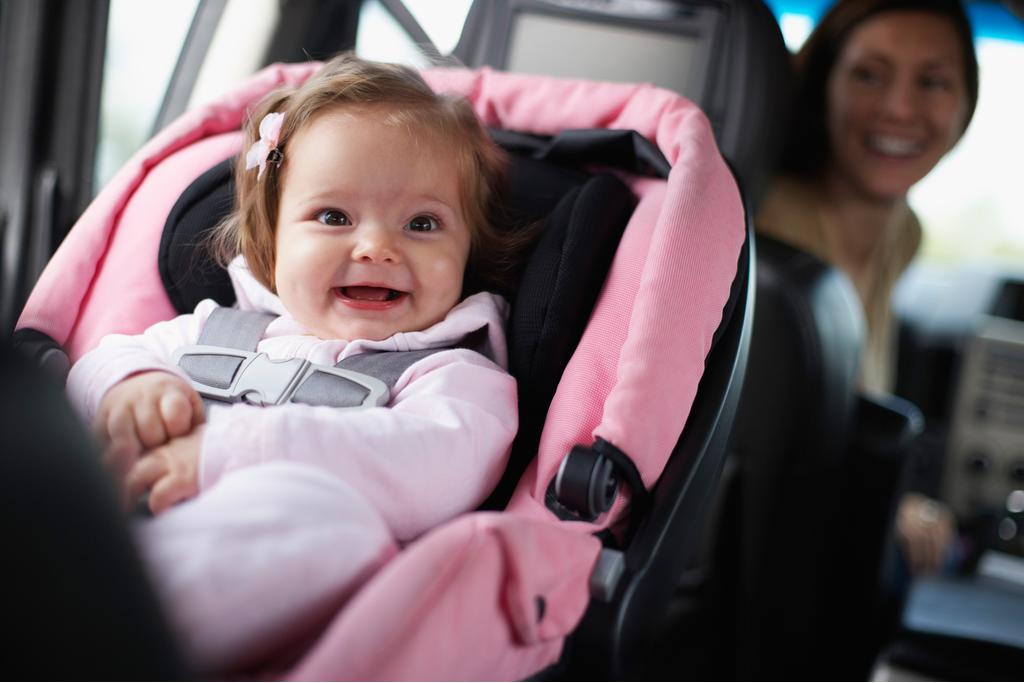
On Sept. 1, a new law goes into effect in New Jersey that will have parents reevaluating how their kids ride in their car seats. Parents of infants and toddlers in New Jersey could be turning their forward-facing child-safety seats back to the rear-facing position to comply with the state's new car-seat law. New Jersey is the first state to enact such a law; a similar law takes effect in Oklahoma on Nov. 1.
Related: Car Seat Checks
This new law follows the American Academy of Pediatrics' guidelines, which were first created in 2011 and adopted by the National Highway Traffic Safety Administration. The AAP and NHTSA recommend that children remain in rear-facing car seats until at least age 2 or until they reach the car seat's height or weight limit.
Under New Jersey's law, children younger than 2 and weighing less than 30 pounds must be in a rear-facing car seat with a five-point harness that's installed in the backseat. There are no exceptions made for little ones with long legs. For parents concerned that their rear-facing children won't have enough room to sit comfortably, their kids can sit with their legs crossed or resting against the back of the vehicle's seat.
Rear-facing car seats offer increased crash protection because the car seat's shell absorbs crash forces and supports the child's head, neck and back in a crash, according to the National Child Passenger Safety Certification training manual.
According to New Jersey's new law, once a child has reached either the rear-facing car seat's height or weight limit or is older than 2 or weighs more than 30 pounds, they can ride in a forward-facing car seat with a five-point harness until they're age 4 or 40 pounds.
The new law applies to booster seats as well. It states that a child must ride in a booster until age 8 or 57 inches tall. Seat belts are designed for adults, not kids, and a booster seat raises a child so the seat belt fits them correctly at their hips and shoulders. Under New Jersey's new law, at 57 inches tall a child can then sit in the car's backseat and use a seat belt.
New Jersey's new law addresses two of the common car seat mistakes that many parents across the country make: moving children from rear-facing to forward-facing car seats too soon and not using booster seats for a long enough period.
There are a few other common mistakes that parents of kids in car seats should avoid:
- Car-seat installation is too loose: Whether in the rear- or forward-facing position, a car seat installed with a seat belt or the Latch system should move no more than an inch from side to side. Make sure to test your child's car seat every time you use it by giving it a tug at the belt path and looking for too much lateral movement.
- Tether strap is overlooked: When a convertible seat is switched to the forward-facing position, it's important for parents to realize there's an additional strap they need to secure on the car seat. At the top of the forward-facing car seat's back is a long strap with a hook on it. This is the tether strap and it connects to a tether anchor in your vehicle, which can be easy to overlook. In sedans, the anchor is on the rear shelf; in SUVs, wagons and hatchbacks, it's on the seatbacks or in the cargo-area. Sometimes it's in the cargo area's ceiling.
- Keep kids out of the front seat: Many parents let their kids who have graduated from their booster seats sit in the front passenger seat, but children should ride in the backseat until age 13. In a crash, the front airbag could harm a child more than it would an adult. If you need to put your child in the front seat, make sure to move the front passenger seat as far away from the front airbag as possible.
No comments:
Post a Comment